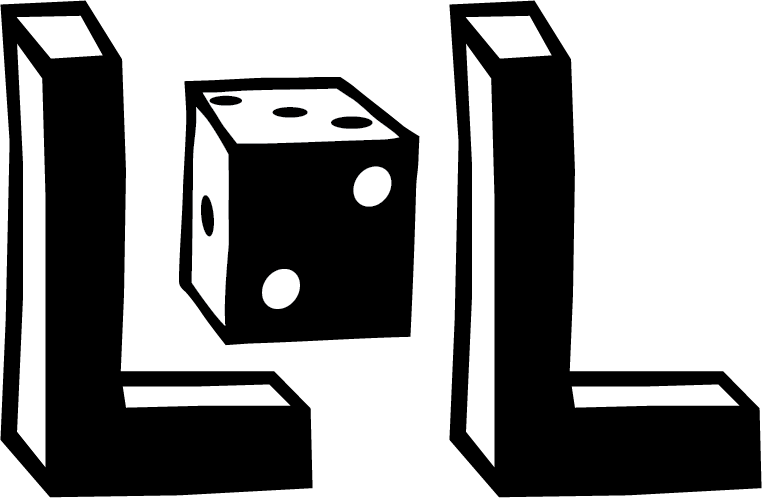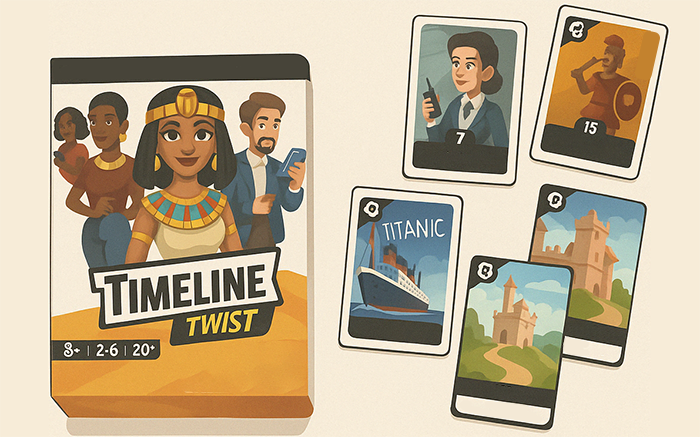The first famous game in this series was Timeline, which stimulates historical knowledge, sequential thinking, and collaborative abilities, making it an excellent game both for entertainment and learning. However, in the educational context, in my opinion, the rules of the new edition – Timeline Twist – are more suitable. The main difference compared to classic Timeline is the collaborative aspect, where players can communicate and advise each other to achieve the best possible score as a team. This is why the article is dedicated to the Timeline Twist game.
In an educational context, it can be used to strengthen interdisciplinary skills, encourage discussion and negotiation, and improve teamwork.
The variety of topics allows this game to be used with students with different interests: from classic Timeline to Timeline Inventions, Timeline Twist Star Wars o Timeline Twist Pop Culture.
Adaptation to the educational context:
The game is useful for teaching foreign languages for:
Lexical development in context – Students acquire and practise specific vocabulary related to historical events, inventions, and discoveries in the target language. This contextualised learning makes vocabulary acquisition more meaningful and memorable.
Authentic communicative practice – During the game, students must discuss, argue, and negotiate in the foreign language to decide where to place the cards. This communication has a real and immediate purpose, making language practice authentic.
Reduction of language anxiety – The playful and collaborative aspect of the game reduces the anxiety that often accompanies communication in a foreign language. Students focus on the task (correctly positioning the cards) rather than worrying about language errors.
Language practice:
Vocabulary: Historical, scientific, or cultural vocabulary, numerals (dates)
Grammar: Temporal prepositions, past tenses, passive voice (For example: “The battery was invented in 1880 by Alessandro Volta”, “This happened before/after…”), hypotheses (“I believe it happened around…”), and justifying one’s choices (“I think it goes here because…”).
Conversation: Discussion about events and their sequence
Storytelling: Narrative reconstruction of historical periods
Tips for adapting the game to the class level and lesson needs:
– In the rules, specify that all discussions between teammates must take place in the language they are learning. To help them follow this rule, penalties can be introduced: for example, if a student does not speak in the language being studied, they must discard one of their cards, which prevents the team from creating a longer timeline and, when calculating points, subtracts a point from the score achieved.
– It’s possible to remove the discard option from the rules: students will pay more attention to events and dates. It doesn’t affect the score, because both the discarded card and the incorrect card that the player keeps are worth -1 point.
– The number of players is up to 6, so for a class, teams can be created:
divide the group into teams of maximum 6 people who compete against each other to create a longer timeline and accumulate more points, or create a team of 12 students, which will play in 6 groups. Two students play for one group.
– Include a debriefing phase where new words or expressions encountered are discussed.
Examples of use in CLIL and other subjects:
The added value of using Timeline Twist is that students:
1. Learn the specific vocabulary of the discipline in context
2. Strengthen understanding of temporal sequences and cause-effect relationships
3. Use the language in an authentic, collaborative, and motivating context
4. Develop critical thinking and estimation skills
History
The game is perfect for history class. Students learn to place events in chronological order in a playful context and are encouraged to remember the historical sequence to get a good score.
To use it in class, you need to choose the game cards or create customised cards appropriate to the class’s history curriculum.
It is advisable to start with one historical period and add other periods later.
After the timeline is ready, ask students to present it, briefly describing each card. This could be done right after the game, or as a group assignment to present later.
The game mechanics could also be used for other subjects where there is a sequence of events.
In this case, customised cards need to be created. Here are some examples:
Science
Evolution and scientific discoveries:
Create a set of cards with scientific discoveries (for example: THEORY OF EVOLUTION, DISCOVERY OF DNA, PERIODIC TABLE, NEWTON’S LAWS, DISCOVERY OF ANTIBIOTICS, MAPPING OF THE HUMAN GENOME)
Students collaborate to correctly position these discoveries on the timeline.
Periodic table
Create a set of cards of the most relevant elements for the curriculum. Each card should have on the front: name of the element, chemical symbol, main use; on the back: atomic weight, electronegativity, melting point (or other relevant properties). Decide the property to order, for example, atomic weight.
Students collaborate to order the elements from lightest to heaviest (for example: H (1.0) – O (16.0) – Fe (55.8) – Cu (63.5) – Au (197.0)).
During the game student can refer to the periodic table.
Literature
Cards with literary works, authors, or movements from English-language literature (for example: CANTERBURY TALES, SHAKESPEARE’S PLAYS, PRIDE AND PREJUDICE, ROMANTICISM, VICTORIAN NOVEL, MODERNISM, THE GREAT GATSBY, BEAT GENERATION, HARRY POTTER)
Students collaborate to create a timeline of English literature.
To help students place authors in the correct historical period, and, as a result, understand them better, it is advisable to combine cards with major historical events and literary ones.
Art
Cards with artistic movements or famous works (for example: RENAISSANCE, IMPRESSIONISM, CUBISM, POP ART, BRITISH PORTRAITURE, DIGITAL ART)
Students must place them in chronological order, discussing characteristics and historical context.
In French, there is a version of the game called Timeline Louvre.
Philosophy
Evolution of philosophical thought:
Create a set of cards with relevant philosophers and philosophical movements. (for example: SOCRATES, PLATO, ARISTOTLE, ANALYTIC PHILOSOPHY)
Students collaborate to correctly position these philosophers and schools of thought on the timeline.
After the students have completed the timeline, ask them to present it by briefly explaining a key concept or fundamental idea of the philosophers. One point is added for each card that is correctly explained.
It is advisable to create cards that include, in addition to the philosopher’s name, a representative quote or key concept, thus facilitating the connection between the thinker and their ideas.
Online resources
On the Asmodee website, you can download the game demo with examples of cards and an activity for history lessons.
Timeline Twist can be played online on Board Game Arena.

